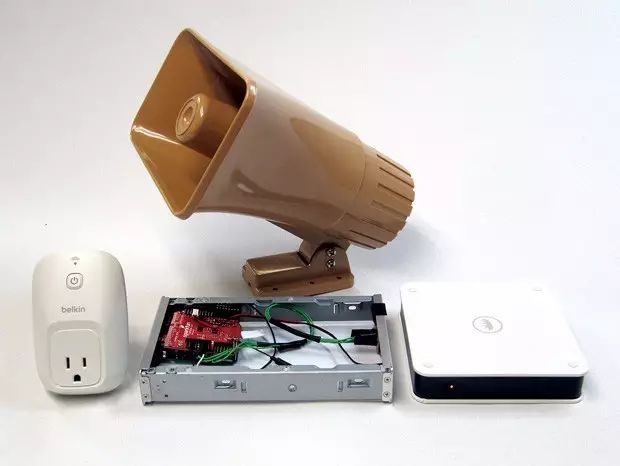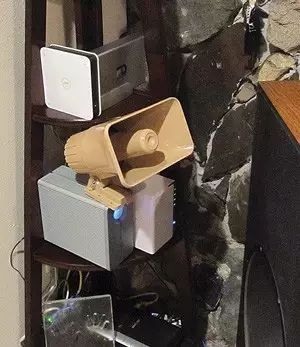
● Use a very loud alarm to scare away intruders.
The final straw that prompted me to create a home security system was a break-in at my neighbor’s house during the day. For months, my wife and I had been worried about the annoying burglaries in our suburban Seattle neighborhood. We suddenly thought about installing a security system at home, but we faced obstacles like the monthly fees and installation hassles of traditional systems. Later, our neighbor alerted us that a burglar had just broken into their house, just a few meters away from ours, and it was broad daylight.
The next day, I started searching for DIY security systems. Thanks to the advancements in the internet and IoT standards, there are now many wireless security systems on the market that are easy to install, scalable, and connect to smartphone applications, and they are more affordable than hardwired products. Most of them come with built-in batteries and 3G cellular radios, so they can still function even if the power or network router fails.
However, while I was painstakingly looking through various support forums for potentially useful security systems, I noticed a common complaint: their alarms are weak. For example, on the Scout Alarm website (a one-stop personalized wireless home security system), there are 156 posts from unhappy customers complaining that “the alarm is not loud enough,” along with the company’s promise to address this issue by redesigning the alarm (which has yet to be fulfilled). Surprisingly, no DIY security system emits enough noise to scare off potential burglars (or includes a terminal to connect an external alarm). Clearly, the designers did not consider deterring intruders.
Still, I decided to order a Scout security system, which offered the sensors I needed at an attractive price. I like the Scout security system because it supports IFTTT (a smart home platform and web-based service for IoT), allowing the system to make the smart (Lifx) bulb on my nightstand flash when the alarm is turned off. I came up with an idea to amplify the alarm sound, which should work with any security system, regardless of whether it supports IFTTT. All I needed to do was build a tracking device for the alarm.
This idea was inspired by photography; studios sometimes use additional standalone flash units that turn off when their connected light detector senses the light from a flash mounted directly on the camera. My little device would similarly use a microphone to listen for the unique sound signal from the Scout alarm, and then send a radio signal on my local network to control a louder alarm that would sync with the Scout alarm.
Installing the Scout security system is easy; I configured the hub (priced at $129) with a free app in less than an hour and connected it to a pair of entry control panels (each $69), several door or window sensors (each $29), and a few motion detectors (each $49). I connected this system to IFTTT and set up an app called “Start Button” that allows my wife and me to use our phones to activate or deactivate the system.
For the listener part of this project, I bought an Arduino Uno ($20) from SparkFun, an ESP8266 Wi-Fi shield for the Uno ($15), and a sound detection sensor board ($11). Compared to more advanced microcontrollers, the Uno is smaller, cheaper, and can run on batteries, but its limited memory later proved to be problematic.

The DIY Home Guardian:
Connect a microphone to a Wi-Fi-enabled Arduino Uno microcontroller to listen for the Scout alarm sound; a wireless switch will turn on the alarm.
By purchasing a Belkin WeMo switch ($39), I simplified the alarm aspect. The Belkin smart switch connects to Wi-Fi and can toggle power for any appliance. In this alarm system, it provides 9 volts of power to a 110-decibel Honeywell 702 alarm ($23). The WeMo switch also comes with a free smartphone app, serving as a convenient backup when I need to manually trigger or silence the alarm. Belkin has not documented the TCP commands to control the switch, but hackers have helped deduce these commands and published Arduino sketches that can turn the device on or off via Ethernet.
All I had to do was adapt the code to make the Wi-Fi shield work, then integrate it as a functional module within the larger program to monitor the frequency, intensity, and duration of sounds received by the microphone board. Within a few hours, I constructed a sound signal detection algorithm.
To calibrate it, I placed the microphone next to the Scout hub and triggered the alarm. Customer reviews of the Scout system were accurate; the alarm’s cry was indeed weak, quieter than my phone’s ringtone or my radio’s alarm sound. The sound was so faint that I doubted the sensor could distinguish the alarm’s ringing from background noise. Upon opening the hub’s cover, I discovered the problem: the installation of the piezo speaker directed the sound into the thick plastic layer of the device. I drilled a small hole over 1 cm wide to allow the speaker to reach the air, and the volume immediately doubled, although it was still insufficient to deter intruders, but loud enough to activate my sound signal detector.
Then, I tackled the 2-kilobyte problem: the memory my program needed exceeded what the Uno could provide, primarily because it required collecting and distributing long data packets to activate the WeMo switch. Experienced programmers guided me to have the compiler store data in larger flash memory (originally meant for program storage) instead of using the Uno’s memory. However, the heavy cost of doing this was sacrificing speed: when the Arduino operated, it took about 30 seconds to toggle the switch.
Through continuous trial and error, I finally found a way: store critical data packets in memory while keeping all other data in flash memory, downloading the final program using spare memory. I connected all the components, downloaded the Scout app, then pressed the “alarm” button, and the alarm suddenly blared loudly, nearly scaring me to death. I was sure the neighbors heard the alarm, and that was the key.
World Science ∣ A Content-Rich Public Account


Long press to recognize the QR code and follow us